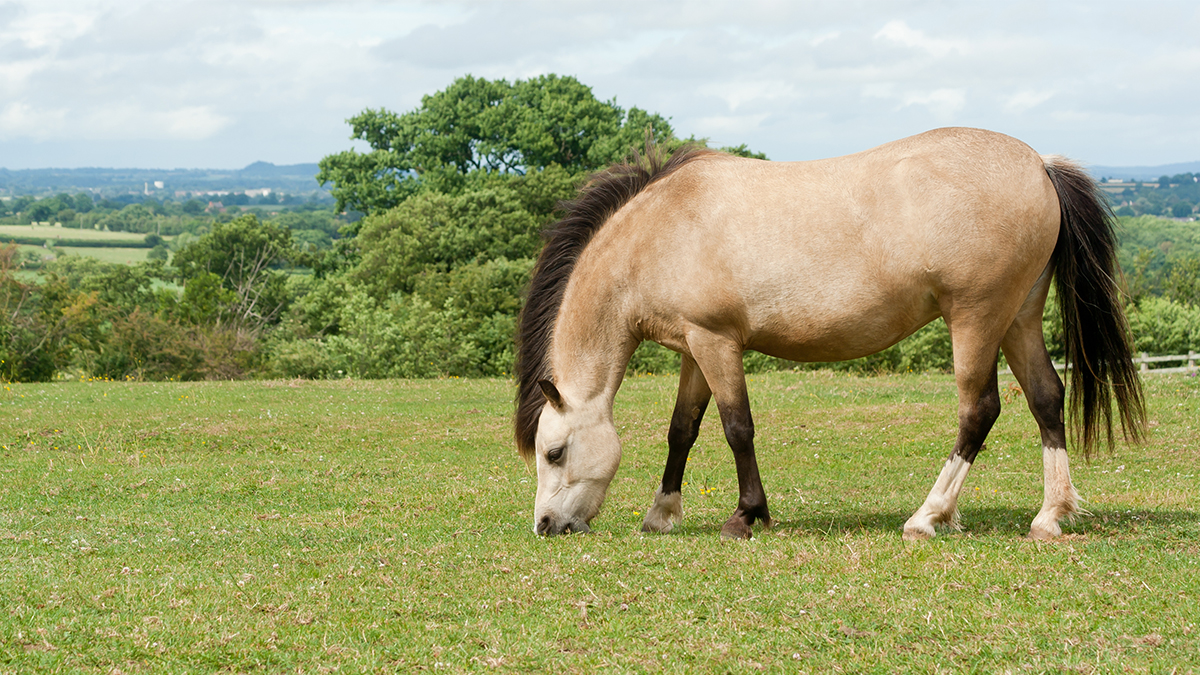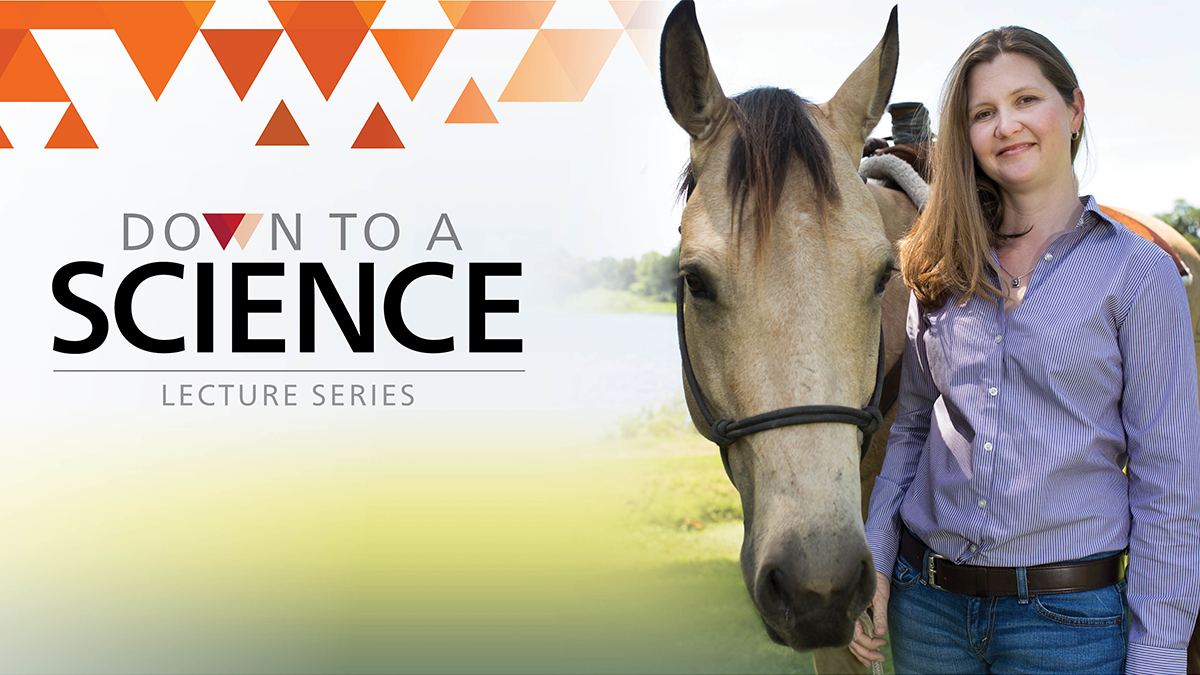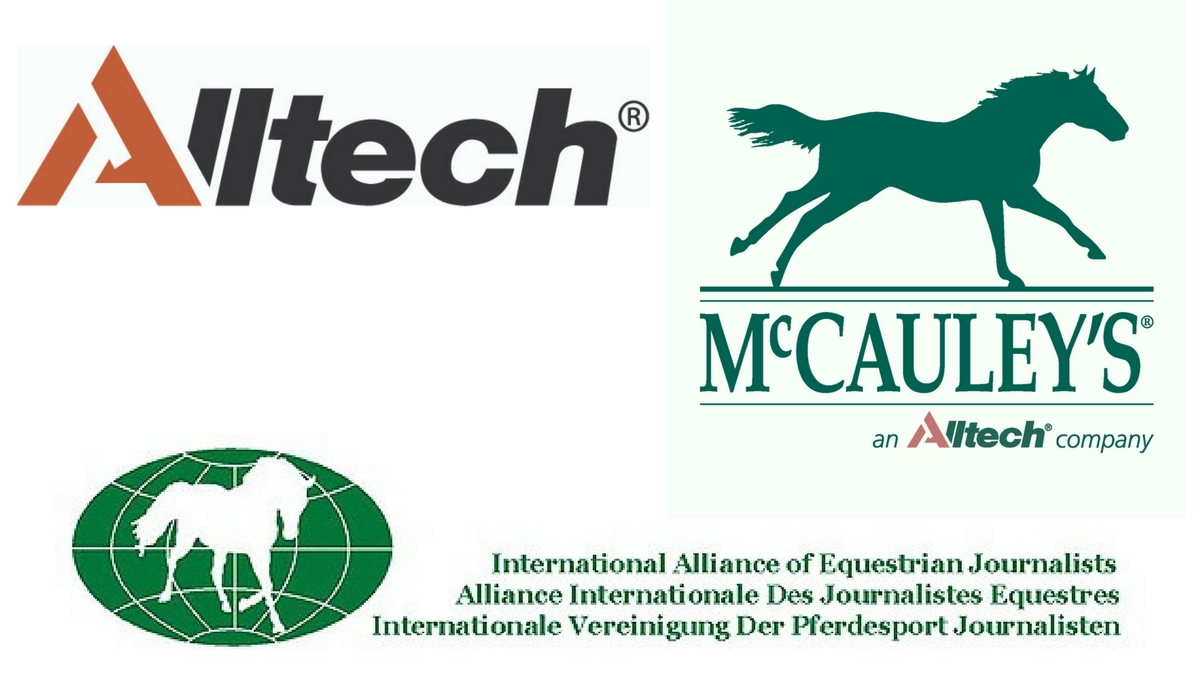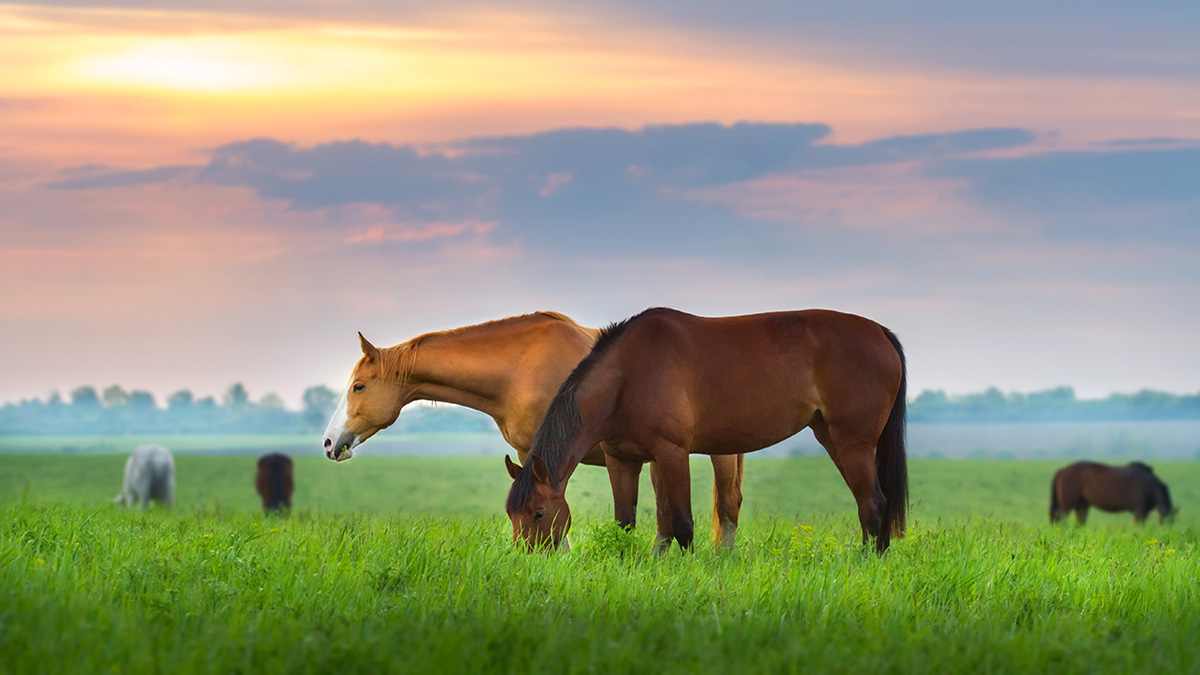The following is an edited transcript of Tom Martin's interview with Dr. Kayla Price, poultry technical manager for Alltech Canada. Click below to hear the full interview:
After you read or hear this interview, you may never look at an egg quite the same way again. Dr. Kayla Price is poultry technical manager for Alltech Canada. Price joined Tom Martin from Ontario, Canada, to talk about eggshell quality and why it matters.
Tom: For this discussion, we're focusing on the outside of the egg. Let's first go to the basic question: What is eggshell quality? What does that mean?
Kayla: I think eggshell quality means different things to different people. And when we focus on the outside of the egg specifically, we’re looking at things like eggshell thickness, what is the eggshell strength, how difficult or how easy is it to actually break that egg. And then, what does that egg look like in terms of dirty spots on it, or anything else to that effect. The external quality is very different than the internal quality. But, for this podcast, we're just focusing on the outside of the egg.
Tom: And do the uses of eggs vary according to how they are graded?
Kayla: Absolutely. If you look at the grading system — and it's only a little bit different where I'm from in the Canadian grading system versus in the U.S. or even globally — there are some basic commonalities. We’re looking at eggs of different sizes, which can go from small to large, extra-large or jumbo. Most of what you see that comes to the table is going to be that larger size, whereas the other sizes may be beneficial in terms of eggs that come in cartons, so they're already cracked, versus the eggs that would be table eggs. You also have lower-graded eggs that may have a small crack on them or a small dirt spot, but the inside is still usable.
Tom: Are there specific strategies for developing quality shells of different sizes?
Kayla: In general, the hen is always going to be laying the same part of the egg, whether that egg is small, large or extra-large. So, when we talk about eggshell quality, we’re really talking about it in general. We really want that hen to be getting the nutrients and the management that she needs in order to build the shell of that egg.
That being said, with the hen, she's laying the same amount of shell components whether she's young and laying a small egg or whether she's older and laying a larger egg. So, in that bird that is older or toward the extra-large, that same amount of shell component is going to cover a different amount of space versus that same amount of shell component on a small egg. But again, we can use the same management techniques regardless of the size of that egg, because you're trying to avoid those under-grade eggs, which are your dirty eggs or your cracked eggs, regardless of the size.
Tom: Okay. Now, if I’m going after a premium quality egg, what are the essentials that I need to take into consideration?
Kayla: When I start thinking of the word “premium,” I'm really looking for an egg that is going to have a good, hard shell to it, so it will not break easily. It won't break when it’s at the farm, when it’s moving to the processing plant and, ultimately, it won’t break when it's in the carton before we break that egg to put in the skillet. We’re looking for that outside eggshell quality just as much as that internal quality, like making sure that the yolk looks good and the egg white looks good.
In terms of the essentials, there are a couple of things to consider. You can start looking at the nutrition of the bird — what goes into making that eggshell just as much as the internal component — and you also have to start thinking about management: the health of that bird, how old is that bird and what needs to be changed depending on the age, the environment and, to a small extent, the genetics. The things that we can change would certainly be nutrition management, health and environment.
Tom: At what point in bird's life cycle should producers start thinking about egg development and eggshell quality?
Kayla: I think that's a really interesting question because when people start thinking about eggshell quality, the first thing that comes to mind is when the hen actually starts laying that egg, which is about halfway through her full lifespan. If you only start looking at eggshell quality halfway through, then you’re really only capturing half the potential. I think it's really important to start having that conversation when that poulet or hen starts to be placed in her housing system and continue all the way through the growing phase, before she reaches the age of maturity to be producing an egg and then also continuing it through. The idea being that you're setting up the bird for proper body confirmation and skeletal development, which are going to have an impact on the eggshell quality — shell thickness, — just as much as they impact the size of the egg and how well the bird can lay that egg. So, again, I think it's important to start thinking about things from the very start, as opposed to when that hen starts laying that egg.
Tom: Why should calcium receive particular attention?
Kayla: Calcium is something that people always go to when they start thinking about eggshells because many people know the eggshell has a good amount of calcium within it. So, this is the first thing that people start thinking about. It is incredibly important because the eggshell itself is about 95 percent calcium carbonate. One of the main components of calcium carbonate is calcium. So, this is something that certainly needs particular attention.
Tom: Is the size of the calcium particle important?
Kayla: Yes, it is. This is something that people in the industry are taking more notice of. It’s important to talk about the different sizes. So, you can go from a fine calcium particle size to a medium calcium particle size to a coarse calcium particle size.
What’s important is, you have to think of the fine calcium size as giving that quick shot of calcium. The bird can absorb it quite quickly because they don't need to break it down at all. But, if you start moving toward the coarse calcium, this one is good because it takes more time for that bird to break down the calcium and a longer amount of time for that bird to absorb the calcium. This is important as the bird goes into nighttime and starts really putting that calcium onto the shell or laying down that shell, because when it’s nighttime, she’s not eating. This slow release or slow breakdown of coarse calcium really helps out during this time.
It’s not that you only need one or only the other — you need a good combination of both. This changes as the bird gets older. As the bird gets older, you’re tending toward going more and more coarse but still having a certain amount of fine particle size in there. It’s really about knowing your ratios, and that's where the nutritionist can help in terms of how to deal with the fine-to-coarse calcium ratio.
Tom: What other nutrition elements such as minerals can impact eggshell quality, and how?
Kayla: In terms of other nutrition elements, I think it's important to start thinking about what they are. As I said before, when people think of eggs, they often think of calcium in terms of the actual eggshell, but there are other components to it.
In the eggshell itself, you have an inner as well as an outer shell membrane. That outer shell membrane is the calcium carbonate, and the inner shell membrane is made of many other components. You want to make sure that you're building strength, not just in your outer shell membrane, but also in that inner shell membrane. This is really where other nutritional elements come into play — like minerals, which have a very important role in building that eggshell, somewhat in terms of the outer, but also somewhat in terms of the inner shell membrane.
For example, minerals like copper, which helps a little bit in collagen formation in terms of that eggshell membrane. Similarly, minerals like manganese and zinc, each sort of playing their own different role. Then you can look to minerals like selenium, which supports the reproductive tract itself.
So, these elements, and components like that carbonate component of calcium carbonate, or all other elements that are important for the actual eggshell quality, have very different roles to play within the whole system itself.
Tom: How is eggshell quality impacted by gut health? Is there a direct relationship?
Kayla: It's more of an indirect relationship. I always say that the bird is ultimately a gut with lots of things attached to it. That can be applied to any bird that we want to talk about because, ultimately, what we're putting into the bird and having that bird eat, we want it to be able to translate into the performance factors as well as health factors.
In this case, with the laying hen, a hen that is going to provide us our table eggs, we want our feed ultimately to translate into table eggs, or more table eggs, at the end of the day. So, if we have a gut that is healthy and that is acting the way we want it to, it means this gut is able to absorb nutrients and translate those nutrients as well as absorb things like calcium, like minerals and, ultimately, translate that so it can be used within that reproductive tract or other places within the body. So, direct, perhaps not, but certainly indirect, and there is a role between them.
Tom: What are some of the more common problems being encountered today by egg producers that they're trying to work around or work through?
Kayla: There are always many different kinds of problems, and new problems evolve as we keep raising these birds. But I think the one specifically related to the egg itself at the moment would be — that isn’t related to viral issues, which are certainly happening in the industry and are very important and I wouldn't want to ignore — but relating specifically to the egg, would be looking at things like deep cracks in the eggs, especially as people start either thinking or moving toward, or are already using, these alternative housing systems. You want to make sure you have a nice strong egg that is not going to be easily cracked by other things happening within the system just as much as you want to make sure you have a good internal eggshell quality, and you want to make sure that you are able to maintain that food safety aspect so that you're able to provide safe food or safe eggs, ultimately, for the public that is consuming those eggs. So, those would be common problems encountered by egg producers. And, again, the biggest one being those downgraded eggs, which would be your cracks, which would be your dirty eggs.
Tom: What does it mean to support the good guys in relation to eggshell quality?
Kayla: I think it's a very interesting phrase, “supporting the good guys.” It relates back to this indirect relationship between gut health and eggshell quality. So, ultimately, with gut health, we want to make sure we're maintaining a healthy and well-balanced gut, meaning that in the gut, there can be good microbes or good bacteria. There can be bad bacteria or bad microbes, or those that are potentially bad. Those that are potentially bad are opportunistic. Given the right environment, they will become bad or they will become a problem.
When we relate back to gut health, we want to make sure we have this balance between our good guys, our potentially bad guys and our bad guys. In order to help with gut health and, ultimately, help with how that gut is able to digest and absorb nutrients and then translate this within the body to help with the egg and the eggshell, we want to make sure that we're supporting those beneficial bacteria — or supporting the good guys. The end goal is to maintain good gut health.
Tom: How do you manage and sustain that balance?
Kayla: There are a couple different factors. It's never just one thing that's going to solve the problem. Everyone always looks for that silver bullet, but when it comes to animals and to biology, a silver bullet is almost an impossible goal. You want to make sure that there is a good combination of management practices. We want to make sure that we're using the best practices in managing the birds, just as much as biosecurity on the farm — which is incredibly important as we start thinking about other viral or bacterial problems that can potentially impact these birds — and the type of nutrition that these birds are receiving.
We want to make sure that they are receiving the best nutrition possible with the best ingredients possible. We want to make sure that those ingredients are free from contaminants like mycotoxins and use minerals in their best possible form that are most available and well-absorbed by the bird. This would be things like organic trace minerals versus what is very commonly used as inorganic trace minerals.
And then also making sure when we talk about management, we want to make sure that there's proper water quality. At the end of the day, we just want to make sure we have a good combination program within the diet and the nutrition, a good feed additive program, to help with that just as much as a good management program and good biosecurity.
Tom: Dr. Price, when we began the conversation, I said we were going to focus on the outside of the egg, but I'm wondering, does the internal quality of an egg in some way impact the quality of its shell?
Kayla: That’s an interesting question because we're still talking about the egg itself. But when we talk about the internal quality of the egg, we're really talking about aspects like the yolk color, what the yolk looks like or how high that yolk is, just as much as what the egg white looks like and how that egg white spreads. So, in terms of if the internal eggshell quality is going to have a direct effect on how easily or if the shell cracks, possibly not. I think this is more of an indirect relationship where if you're focusing on a good quality internally and externally, ultimately, you're going to have a good-quality egg overall. That’s really the target: making sure we have a good-quality egg that is safe for consumers.
Tom: Are there some programs for enhancing eggshell quality that you recommend?
Kayla: I think this goes back to that combination program. Again, it's important to look at not only management, biosecurity and nutrition, but also the feed additive program.
We touched a little bit on organic trace minerals and making sure that you're using organic trace minerals that are bioavailable to the bird, supporting good absorption and using other additive components that can help in terms of supporting those good guys or supporting the beneficial bacteria within the gut.
This can mean using components like mannan-enriched fractions, which help selectively remove bad bacteria and allow room for good bacteria to thrive. There are plenty of other feed additive components that can be built into a program to make sure that you have a comprehensive program on the feed additive side. That can be combined with a full program on the nutrition side and with management and biosecurity.
Tom: Are there any emerging trends in poultry out there that you're watching that have captured your interest and attention?
Kayla: Yes. There are always some new and interesting things. Unfortunately, sometimes it relates to viruses. I think something to watch in the layer world — people have been talking about this virus — is false layer syndrome. We are certainly watching how this can be handled. This is one of many emerging things, along with making sure that we have the right biosecurity to avoid any other possible avian influenza outbreaks, which we haven't seen at all lately. Hopefully, we will not see any in the future. And, of course, making sure that we do what we can to achieve fewer cracks and dirty eggs.
So, there are a couple of different things to watch out for. Another one is the constant concern about food safety and making sure that we're producing safe food for our consumers and being transparent in showing that we’re producing safe food for our consumers.
Those are a couple of different things that really grab my attention and I will continue to follow.
Tom: Dr. Kayla Price is poultry technical manager for Alltech Canada. And thank you so much for joining us.
Download our FREE egg shell quality poster
I want to learn more about improving egg shell quality through nutrition!



























